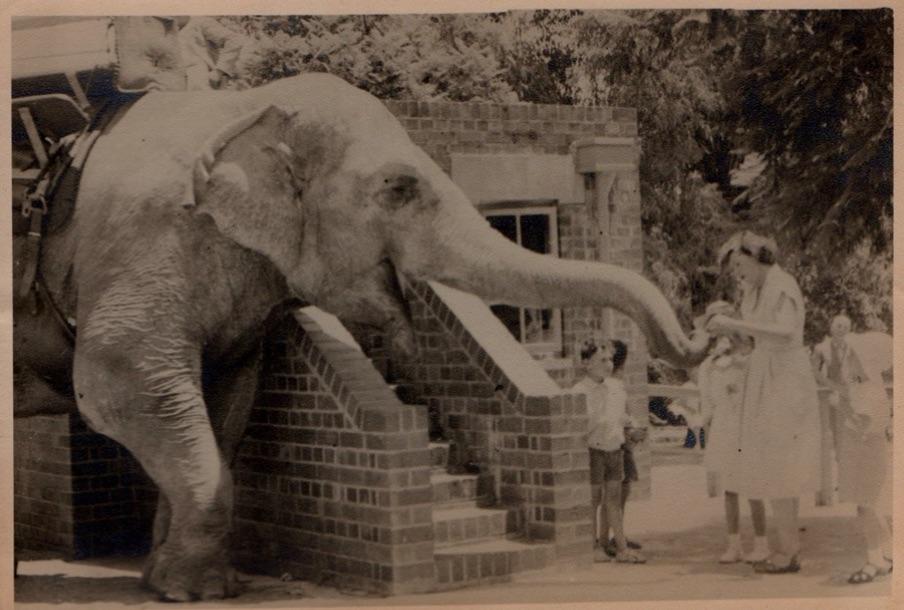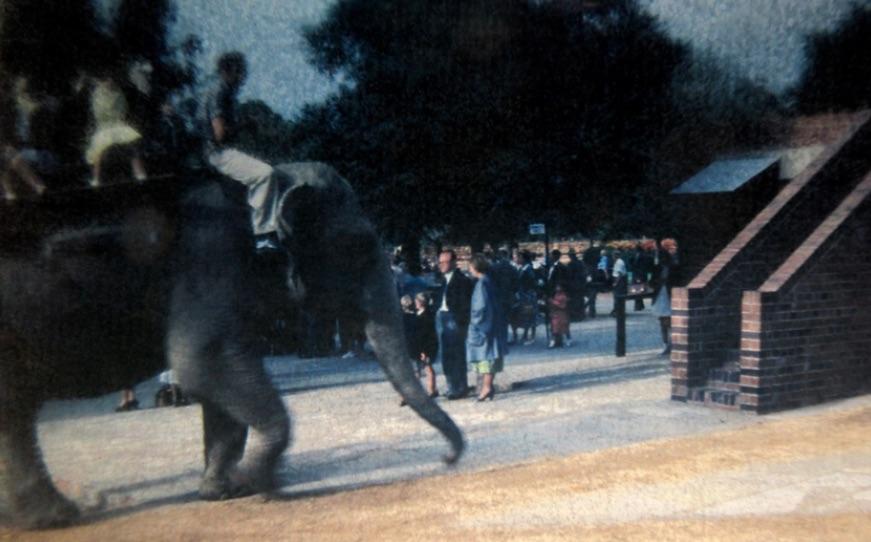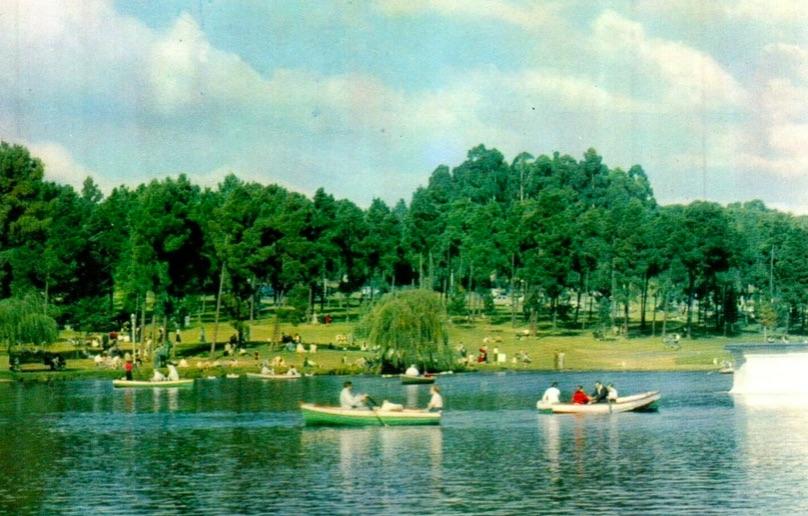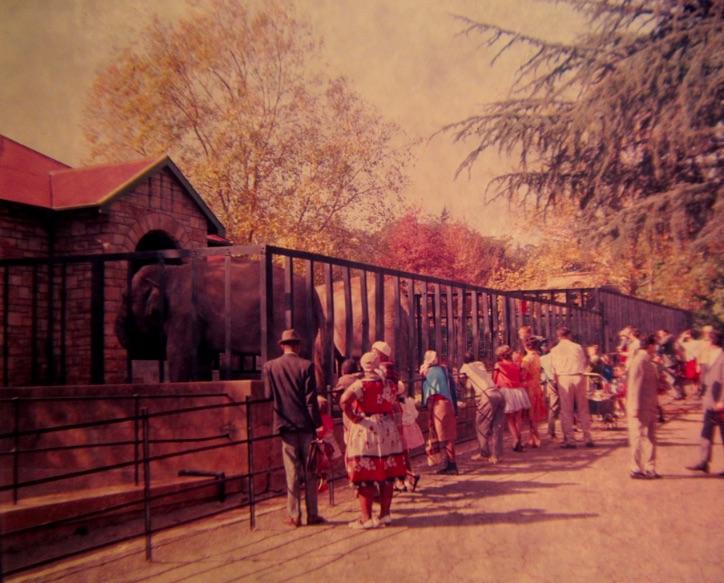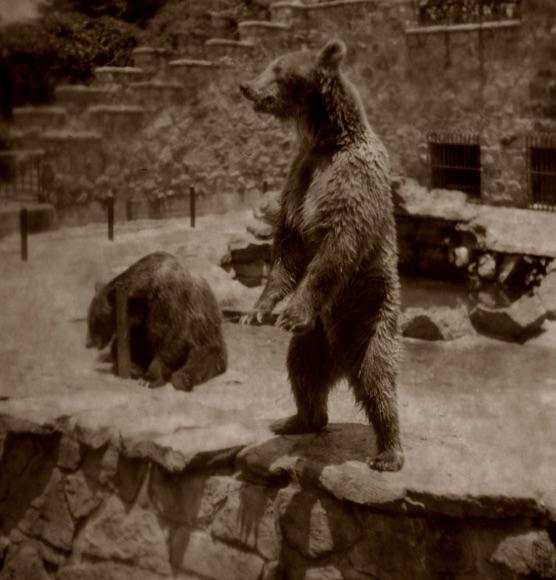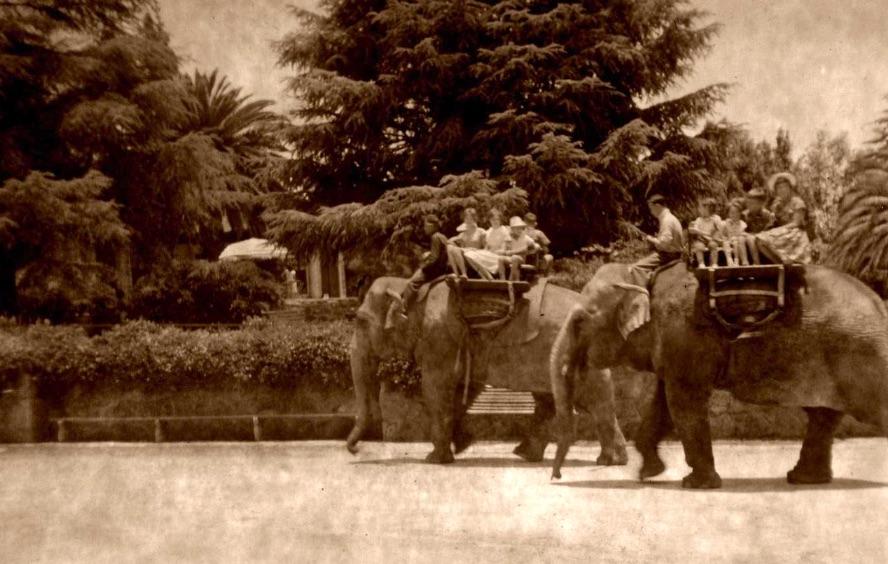
Disclaimer: Any views expressed by individuals and organisations are their own and do not in any way represent the views of The Heritage Portal. If you find any mistakes or historical inaccuracies, please contact the editor.
Years ago, a friend who grew up in Parkview told me a story. She said that one of the Indian elephants at the Zoo ‘went crazy’ during one of the rides. The full details of this event are not recorded, but the children must have been rescued. My friend recalled that, instead of the elephant being retired after its years of service, it was shot. While I was unable to confirm the event, the story brought back my own memories of elephants at the Johannesburg Zoo.
Remembering childhood visits to the Johannesburg Zoo
Because we also lived in Parkview, we regularly visited the Johannesburg Zoo in the 1960s, walking there from Galway Road. As a child, I remember the dark Victorian-type dungeon cages for the lions, polar bears and hyenas, and we could always hear the lions roaring at night as well as the weird cries of the hyenas. I also remember the rides on the two Indian elephants, but I was too little (five years old) to try these rides. Below are some of the photographs my father took at the zoo in the 1960s.
Indian elephant being given peanuts at the Johannesburg Zoo (Victor Hearn, 1961)
One of the Indian elephants with its cargo of children heading back to the platform for the children to disembark. The platform is up the stairs on the right. (Victor Hearn, 1961)
The history of the Johannesburg Zoo and its animals
The Johannesburg Zoo was established in 1904 when 200 acres of land were donated by the Wernher Beit mining company as a recreational venue for all of the people of Johannesburg in perpetuity. This offer was formally accepted by the Town Council of Johannesburg and the land was signed over to the people of Johannesburg. It was to be called "The Hermann Eckstein Park" in memory of the founder of the firm. The area formed the Zoo Lake Park and the Johannesburg Zoo, divided by Jan Smuts Avenue.
Old photo of Zoo Lake
At first, there was only a handful animals, but the menagerie quickly grew into a formal Zoological Gardens collection for the young city of Johannesburg. In the original animal collection, there were no elephants at all. Between 1913 and 1915, elephant and rhino houses were erected, and later, a hippo house and pool were added. An elephants’ bathing pool was constructed in 1937 and one Asian elephant and one Bactrian camel were then purchased and trained for rides (Geddes 2002).
When did the Joburg Zoo begin keeping elephants?
The Council Minutes dated 8th April 1913 state that the Johannesburg Council allocated £615 for the purchases of animals for the Zoo, including an elephant and a pair of yaks. The elephant was to cost £350, and the council decided not to get the yaks which would have cost £100. The minutes stated that it would be a year before the elephant was delivered. The elephant and the other animals were to be purchased in Europe.
The Johannesburg Council minutes of 1914 continued the story of the elephant purchase, recording that a suitable Indian elephant could not be purchased in Europe and that the Zoo would have to try and get one in India. This meant that the cost would be more than initially agreed. A cable was sent to Mr Windhorn who was obtaining the animal, agreeing to the increased price of £450.
What the Council Minutes did not mention is whether this was only the cost of buying the elephant or whether this was the whole cost of purchasing and getting the elephant to Johannesburg.
The Elephant House
The Elephant House at the Johannesburg Zoo was built between 1913 and 1915 and always attracted a fair share of visitor attention. The Johannesburg Zoo has always been open to all races, part of the conditions of the land donation. There were, however, separate entrances into the Zoo for whites and non-whites. Despite these racially separate entrances, many black people visited the Johannesburg Zoo throughout the apartheid years.
The Elephant House at the Johannesburg Zoo, circa 1961. It was converted into an auditorium in the 1980s. (Victor Hearn)
When did the Joburg Zoo stop keeping Indian elephants?
At some point, our family noticed that there were no longer elephant rides at the Zoo. Researching this topic recently, it seems there was an unfortunate incident which ended the Indian elephant rides. No specifics are given, but this seemingly also contributed to phasing out of the keeping of Indian elephants at the Zoo. An online history (dated 2010) of the Johannesburg Zoo explains: "One day in 1963/1964, an elephant with a cargo of children left its regular route and ran back to the Elephant House, refusing to return to its routine. This event marked the end of the elephant rides and only the donkey rides continued until the early 1990s”.
A different way of thinking about captive animals
Back in those early days of zoos, attitudes towards animals in captivity were different to those we have now. It was entertaining for visitors to see large animals giving rides or doing tricks.
People used to throw peanuts in their shells for the bears and it is indeed surprising that the bears didn’t fall down into the moat. In the 1960s, visitors to the Johannesburg Zoo could buy small paper bags of peanuts in their shells to throw at the bears as well as give to the elephants. Many elephants have fallen into zoo moats around the world, trying to reach the peanuts, usually with fatal consequences for the elephant.
Two of the Johannesburg Zoo's captive bears, circa 1961 (Victor Hearn)
Pressure on the Johannesburg Zoo to stop keeping elephants
In recent times, the keeping of African elephants at the Johannesburg Zoo has come under fire in line with international sentiment. There have been calls to release a female African elephant named ‘Lammie’ back into the wild since Lammie’s mate of 37 years died. The reality is that after so many years of captivity, animals cannot be sent back into the wild as they would not survive. Lammie could have been ‘retired’ to an elephant sanctuary for a well-earned rest. Instead, in 2019, the Johannesburg zoo purchased two additional African elephants to keep Lammie company.
Main image: Parade of Indian elephants with their passengers, Johannesburg Zoo. Photograph by Victor Hearn 1961.
Sue Taylor biography - Sue Taylor holds a PhD in Plant Biotechnology from the University of KwaZulu-Natal, South Africa. Her current interests encompass cities and urban greening, material culture (and what trash can tell us about society), degraded peripheries and researching the disintegration (and rehabilitation) of landscapes and buildings. She has recently completed three years as a Research Fellow at the Afromontane Research Unit, QwaQwa, University of Free State (South Africa) and during that time published two book chapters on urban issues, as well as a journal paper on climate change and a paper on an an Asian fresh water snail species spotted at Zoo Lake. The zoo still has 326 species of animals consisting of 20 species of frogs, 5 species of spiders, 128 of birds, 47 of reptiles, 25 of fish and 101 species of mammals (Wikipedia).
Sources
- Kumar V, Reddy VP, Kokkiligadda A, Shivaji S., Umapathy G (2014). Non-invasive assessment of reproductive status and stress in captive Asian elephants in three south Indian zoos. General and Comparative Endocrinology 201: 37-44.
- Geddes M (2002). A Brief History of the Johannesburg Zoo. https://docplayer.net/21410125-A-brief-history-of-johannesburg-zoo.html
- History of Johannesburg Zoo, Worldwide Zoo Database
- Mitchell Park's Nellie the Elephant, Blue Security
- See also the Heritage Portal article on night visits to the Johannesburg Zoo by Kathy Munro
Comments will load below. If for any reason none appear click here for some troubleshooting tips. If you would like to post a comment and need instructions click here.

